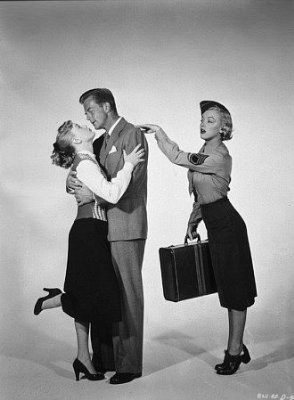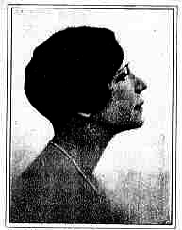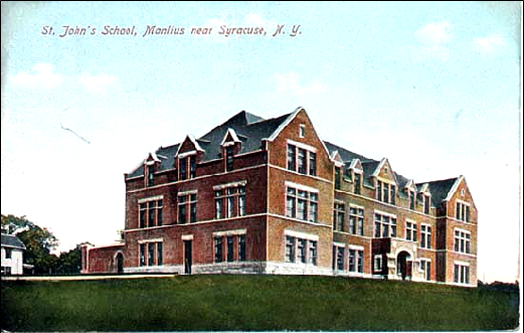Film Historians and Enthusiasts
Bill Lundigan -
Welcome to this quarter's ACS Newsletter
Local Spotlight: William Lundigan … Syracuse Swashbuckler!

Born on June 12, 1924 in Syracuse, NY, William Lundigan was a very athletic fellow with the added benefit of having solid artistic ability. His athletic prowess and strong 6’ 2” frame got him spots on the Syracuse University Orangeman football, basketball and tennis teams.
According to IMDB and making for a great story, Lundigan was discovered by Charles Rogers then head of production at Universal Studios. Rogers happened to be in town and tuned in to radio station WFBL in Syracuse. Rogers was so intrigued by a voice he heard reading a commercial that he gave instructions to find the speaker. Bill was then brought to New York and tested for movie possibilities. The speaker, of course, was Lundigan who had the WFBL announcing job partly because his father owned the building that housed the radio station.
Later, he was successful as the host of the CBS’s “Climax” and “Shower of Stars.” He delivered on-air commercials for their sponsor, Chrysler Motors. Off screen, he traveled as a goodwill ambassador for the auto company, covering over 100,000 miles on the road, and visiting 560,000 people in 90 weeks.
His TV claim to fame was the series “Men Into Space.” The more-or-less realistic adventures of Colonel Ed McCauley, played by Lundigan, head of the American space program. He battled saboteurs, budget cuts, defective equipment and other problems in outer space. Bill made a great many movies with Errol Flynn and many of the top stars of their day such as, Ronald Reagan, George Brent, Mickey Rooney, Van Johnson and Lionel Barrymore.
Some his movies... The Way West, (1967); White Orchid, Inferno (1953); Inside Story (1948), Dishonored Lady, Fabulous Dorseys (1947); Andy Hardy's Double Life, Apache Trail, Northwest Rangers, Courtship of Andy Hardy (1942); A Shot in the Dark, Case of the Black Parrot (1941); Santa Fe Trail, SeaHawk, Fighting 69th (1940); Dodge City.“
Here’s a pic with Lundigan and Marilyn Monroe and June Haver.
Gene Gauntier…making the very first Civil War film in Syracuse
with “Days of “61”
In 1906 Gene Gauntier was offered $3 to play the lead in Biograph’s “The Paymaster.” The producer was so pleased with her performance that he raised it to $5. A pittance compared to her later salaries. During those halcyon years from 1907 through 1916 Gene quickly became a popular figure. Her career extended way past the early days of moving pictures and long into later years. Gauntier became Kalem's star actress, dubbed by the studio as the "Kalem Girl," who also became their most productive screenwriter in collaboration with director Sidney Olcott on numerous film projects. Enjoy a few Central New York related excerpts from her essay called "Blazing the Trail." It tells the story of her thrilling adventures as actress, screen/scenario writer and producer. And sheds some light on early film history. Here is an excerpt...
“That summer of 1907 introduced us to great new locations like Rambo's in Coytesville, New Jersey, and Windy Goal, the Ernest Thompson Seton place at Cos Cob, Connecticut. Coytesville (Fort Lee, NJ) was the same sleepy little village it had been for a hundred years, with winding dirt roads and clapboard houses nestling among rose and lilac bushes, an ideal background for pictures. Rambo's, pictured in hundreds of films, was our discovery.
It was merely a barroom where light lunches were available at all hours. Substantial home cooked hot meals were ordered in advance. Above were small bare sleeping-rooms. It was run by Mr. and Mrs. Rambo and Mrs. Rambo's sister, kindly interested folks who did everything in their power to aid us. A narrow porch supported by uprights ran across the front of the house, which was plain, even to ugliness but typical of almost any part of the U. S.
It served as a New England tavern, for many a western saloon, for Civil War recruiting stations, and dozens of other sets. Banisters and railings could be hastily added, old fashioned chairs, tables and flowering pots dragged out and, with the camera shooting the opposite direction, the old place could be, and has been, used for two different sets in the same picture.
A year or so later, when Mr. Griffith, with his luxurious ideas, discovered this place which we had considered wholly our own, he started what to us was a riot of extravagance. Everything was paid for! $25 dollars for the use of the exterior of the house! $2 dollars each for rooms! And more elaborate dinners were ordered, at $2 dollars a plate!
Here we made “The Days of '61”, the first picture of the Civil War ever produced. The battle scenes were taken at St. John's Military Academy at Manlius, New York, near Syracuse. The costumes came from Gus Elliott's, down in St. Mark's place. It was a queer old shop such as Dickens might have written about. Costumes were rented for $1 dollar each.
The Thompson Seton place supplied the background for our first Indian pictures. An unforgettable lake was encircled by a primeval forest and tangled underbrush, all reflected on the mirror-like surface of the water oil which floated birch-bark Indian canoes. The owner was a nature lover, so wild birds and small animals lived unafraid in the grounds.“
I was excited to find this bit of information that strengthens Central New York’s claim to be more involved in early film/movie history than many thought.
According to Bruce Chadwick author of “The Reel Civil War,” the first civil war era film was the 1903 version of Uncle Tom’s Cabin, but the first true Civil War battle film was “Days of ‘61”, a 500+ foot-long feature provided by the Kalem Company in January 1908. A film made in our own backyard at the St. John Military Academy in Manlius.
Chadwick says it was also the first film to combine narrative with psychological characterization, layered into a story of the war and its aftermath. Yet another first was that screenwriter for Days of ‘61, Gene Gauntier, was the first to concoct a North-South love story that also involved friends betraying their army to save friends. The formula worked as it was used many times over the next ten years to involve a heart wrenching subplot.
Days of ‘61 was also the first picture in which historical figures such as Ulysses S. Grant and Abraham Lincoln appeared adding a layer of authenticity. This was also thought of as good business as it pulled in parents with there children.
Grant historical buffs find the fact that Grant was pictured as a character in a film less than a quarter century after his death as interesting. In “Days of ‘61” the General has a brief scene in which he refuses to hear the pleas of the sister of a condemned confederate soldier. The film helped lay a untrue depiction of Grant used many times in later films, that of a difficult, unsympathetic commander.
Filmmakers went on to make twelve other Civil War films in 1908 and twenty-three more in 1909 and thirty-four more in 1910, but none with the impact of Syracuse’s “Days of ‘61.” This would all change when Griffith rolled out “Birth of a Nation” in 1915, overshadowing everything before it and generally after it for quite a period of time.
Surprisingly, research shows that Syracuse’s St. John’s Academy was also the scene for Biograph’s “Battle of Yalu” in 1904. The motion picture was a reenactment of a battle in the Russo-Japanese War. One may wonder why Syracuse and the Academy but considering the Academy close proximity to Canastota, NY and Biograph’s founders it makes sense. It also must have been a good spot for these New York/New Jersey based companies to do their location work.
Just before “Days of 61”’s release in June, 1907, Kalem Studios was admitted to Edison’s “Trust.” By 1909 the company, founded by George Kleine, Samuel Long and Frank Marion was earning $250,000 per year on its way to becoming one of the largest silent studios in the US, producing two pictures per week with a good deal of regularity. The company most notable one reel production is "Ben Hur." A side note about the film is that Kalem gave no concern to copyright infringements. It was this film that forced and brought about copyright requirements for all film studios.
Most of Kalem's worthy productions were directed by Sidney Olcott including their only feature film "From the Manger to the Cross" (1912). (shown on AMC from time to time) Another first attributed to Kalem is their foresight into the need and popularity of the lobby card. It was Kalem who supplied the first lobby cards to movie exhibitors. The interesting thing about these cards though is that they included the name of the actors in the motion picture being advertised (exhibited.) This action was soon followed by Vitagraph studios, then all the rest.
.

Colleen Moore
Here is a decent webpage about Colleen Moore who lived the better part of her retirement years in Rochester, NY. http://www.brightlightsfilm.com/58/58herwildoat.html

Copyright this business. All rights reserved.

